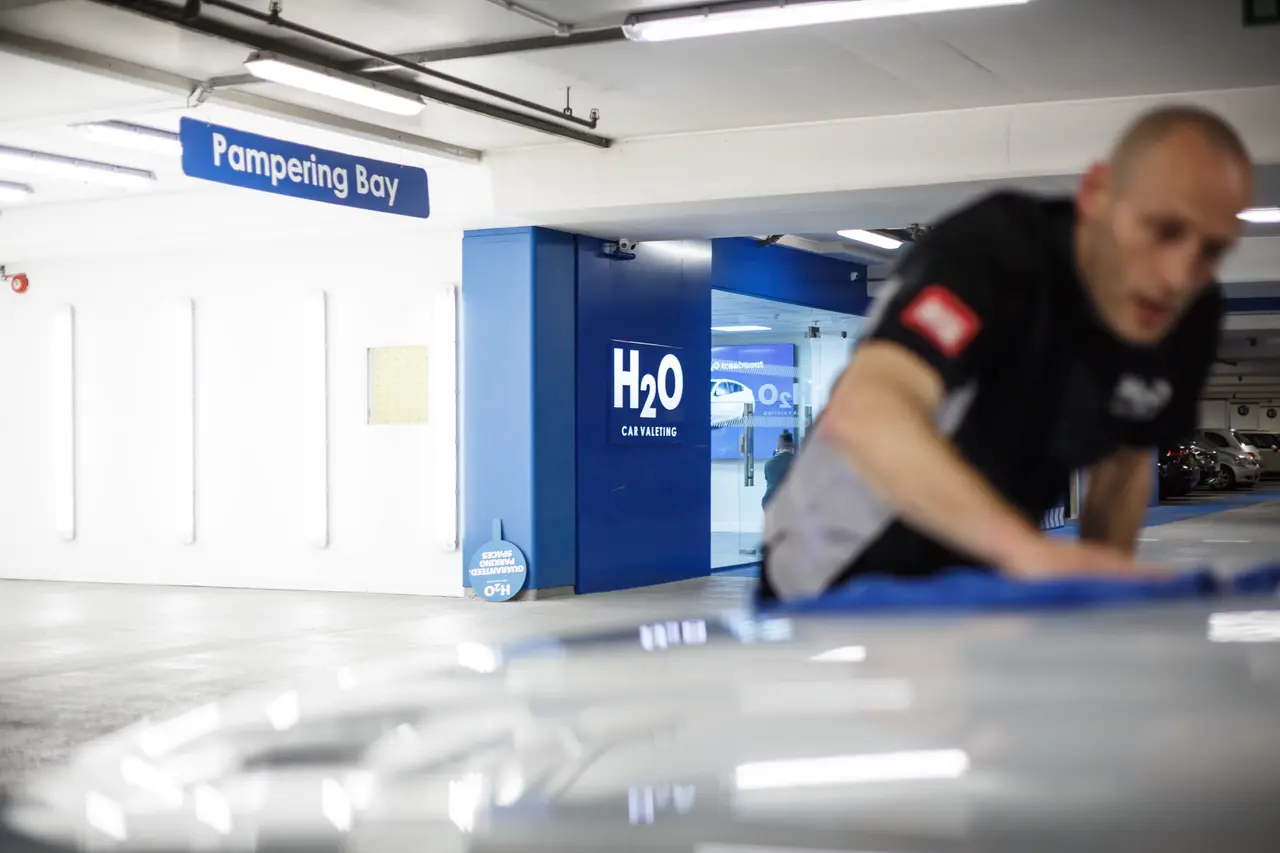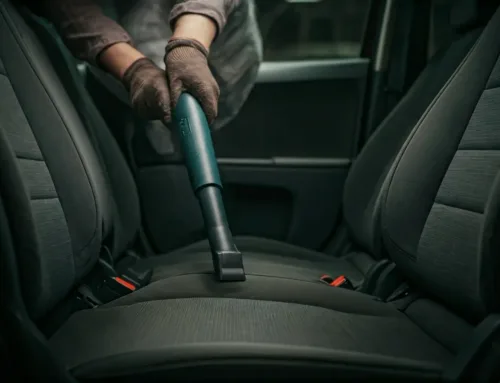Introduction to Wax Polish and Its Importance for Your Vehicle
Your car’s paint job is its suit of armor against the world – it battles the sun, rain, and dirt every day. Wax polish acts as a shield, offering an extra layer of protection while keeping your ride looking sleek and shiny. Think of wax as sunscreen for your vehicle. Just like how sunscreen protects your skin, wax safeguards your car’s exterior from fading, discoloration, and minor scratches. Not just a cosmetic fix, waxing plays a critical role in maintaining the value and longevity of your vehicle. By regularly applying a good-quality wax, you’re not only enhancing its appearance but also preventing costly repairs down the line. From liquid to paste, natural to synthetic, the options are many, and choosing the right one can make all the difference. So, buckle up as you’re about to find out how to pick the perfect warrior to protect your vehicle’s armor.
Different Types of Wax Polish: Which Is Right for You?
When it comes to keeping your vehicle looking its best, wax polish is your go-to choice. But not all waxes are created equal. You’ve got options, and picking the right one depends on what you’re after—shine, protection, or maybe both. Let’s break it down.
First up, carnauba wax. It’s the heavyweight champion for shine. If your goal is that wet, glossy magazine cover look, carnauba’s your best bet. It’s made from Brazilian palm tree leaves and is known for its durability and deep, rich shine. However, it doesn’t last as long as others, so you might find yourself reapplying more often.
Then there’s synthetic wax, also known as paint sealant. This one’s all about protection. It might not give you the same shine as carnauba, but it makes up for it in longevity. Synthetic waxes can shield your car from the elements, UV rays, and even some scratches for longer periods. If you’re after low maintenance, this could be the way to go.
Now, for a bit of a hybrid approach, there’s liquid wax. Liquid waxes can be a mix of both carnauba and synthetic elements. They’re easier to apply than pastes and can offer a good balance between shine and protection. Perfect for those who want a bit of both worlds without too much fuss.
And let’s not overlook spray waxes. These are the quick fix of the wax world. Not as durable or protective as the others, but super easy to apply. If you’re short on time or just need a quick touch-up between more thorough wax jobs, spray waxes can give your vehicle that immediate boost in appearance.
Choosing the right wax polish comes down to your priorities—shine, protection, ease of application, or maybe a blend. Each type has its perks, so think about what’s most important for you and your vehicle. No
Understanding Vehicle Paint Conditions and Wax Polish Selection
Before you dive into the world of wax polishes, it’s key to examine your vehicle’s paint condition. Not all cars require the same type of wax because their paint conditions can vary greatly. Basically, if your car’s paint is new and in top shape, you might want a wax that highlights its shine and protects against dirt and grime. On the flip side, if your paint has seen better days with scratches and fading, look for a wax designed to restore and revitalize.
There are three simple steps to figure out what you need: Check the paint, pick a wax based on the condition, and consider the type of finish you’re after. Waxes can be liquid, paste, or spray. Liquid waxes are great for cleaning and durability, paste waxes offer a deep shine, and sprays are the easiest to apply. If you’re dealing with light scratches, a cleaner wax might do the trick. For a car with a good paint job looking for shine and protection, a finishing wax works best.
Remember, the right wax can not only make your car look like it just rolled out of the showroom but also protect its surface from the elements. So, take a moment to assess and choose wisely. Your car’s paint will thank you.
Benefits of Regular Waxing Your Vehicle
Regular waxing boosts your vehicle’s shine and shields its paint from harsh elements. Think of wax as a sunblock for your car. It prevents fading and damage from UV rays. Wax also forms a protective barrier against bird droppings, tree sap, and road salt, which can eat away at your paint over time. Another perk? Your car stays cleaner longer. Dirt and grime won’t stick as easily, making your vehicle easier to wash. Plus, should you decide to sell your vehicle in the future, regular waxing can preserve its value. A car with a glossy, well-maintained exterior often sells faster and for a better price. Simply put, waxing is like giving your car a shield, keeping it looking newer and saving you money down the road.
How to Determine the Best Wax Polish for Different Climates
Choosing the right wax polish for your vehicle depends a lot on the climate where you drive. In areas with lots of sun, you’ll want a wax that offers strong UV protection to prevent paint fading. Look for labels that mention “UV protection” or “sunblock for your car.” On the other hand, if you’re in a place with harsh winters, find a wax that’s known for its moisture resistance. This helps protect your car’s paint from road salts and ice. For those in rainy places, a wax with excellent water beading properties is a must. It’ll ensure the water slides right off, reducing water spots and corrosion potential. So, when picking your wax, keep it simple: UV protection for sunny areas, moisture resistance for snowy spots, and water beading for rainy environments. Remember, the right wax can make a big difference in maintaining your vehicle’s shine and protecting its paint, no matter the weather.
Application Tips: Getting the Most Out of Your Wax Polish
To truly benefit from wax polish, application technique matters. Start by ensuring your vehicle is squeaky clean and dry; dirt or moisture can hinder the wax’s ability to bond. Apply the wax in a shaded area to prevent it from drying too quickly. Using a foam applicator or microfiber cloth, spread a thin, even layer of wax onto the vehicle’s surface in a circular motion. Overloading with wax won’t enhance the shine; it’ll just leave residues that are harder to buff out. Allow the wax to dry to a haze, which usually takes about 10 to 15 minutes, depending on the wax type and environmental conditions. Use a clean, dry microfiber cloth to buff the haze off in a circular motion, turning the cloth frequently to ensure a uniform finish. For best results, apply wax every three to four months to protect the paint and maintain the vehicle’s gleam. Remember, patience and thoroughness are key to a stunning wax job.
DIY vs. Professional Waxing: Pros and Cons
When it comes to making your car shine like new, you’re faced with a choice: do it yourself or let a professional handle it. Both options have their strengths and weaknesses. Let’s break it down. DIY waxing is all about control and savings. You pick the wax, set your pace, and save some cash. The downside? It’s time-consuming, and if you’re not careful, you might not get that uniform, glossy finish. Then there’s the risk of damaging your car’s paint if you’re not sure what you’re doing. On the flip side, professional waxing screams convenience and expertise. You get a team that knows their stuff, applying the perfect coat with precision. Plus, they can spot and suggest fixes for minor issues before they blow up. The catch? It can be pricey, and you have to trust someone else with your ride. So, what’s it gonna be? DIY for the hands-on folks looking to save a few bucks or professional for a hassle-free, top-notch shine? The choice is yours.
Maintenance Tips: Prolonging the Effects of Wax Polish
To keep your car’s wax polish lasting longer, you want to follow a few common-sense maintenance tips. First, always wash your vehicle in the shade. Direct sunlight can quickly heat up the car’s surface, causing the wax to break down faster. Choose a mild soap specifically designed for cars to avoid stripping the wax. After washing, dry your car with a clean, soft towel to prevent water spots that can mar the wax’s appearance.
Another key point is to park your car under cover whenever possible. Harmful UV rays from the sun, bird droppings, and tree sap can degrade the wax more quickly. If you don’t have access to covered parking, consider using a car cover to protect the finish.
Lastly, reapply wax regularly. Even the best wax jobs don’t last forever. Depending on the quality of the wax and your vehicle usage, you’ll likely need to reapply every three to six months. Regular touch-ups will not only keep your car looking shiny but also protect the paint surface from the elements.
By following these simple steps, you can extend the life of your wax polish, keeping your car looking fresh and vibrant for longer. Remember, a little effort goes a long way in maintaining that glossy finish.
Common Mistakes to Avoid When Applying Wax Polish
When applying wax polish to your vehicle, there’s a right way and a wrong way. Getting it wrong can lead to a less glossy finish and may even damage your car’s paint job. First off, avoid waxing your car under direct sunlight. The heat dries the wax too quickly, making it tough to remove and less effective. Next, don’t skip washing your car. Dirt and grime under the wax can scratch the paint. Another common blunder is using too much wax. A thin, even layer is all you need; anything more is a waste and hard to buff out. Also, steer clear of applying wax with the wrong materials. Soft, lint-free cloths or foam applicators work best. Finally, rushing through the buffing process can leave streaks or swirl marks. Take your time to achieve that perfect shine. Remember, the goal is to protect and enhance your car’s appearance, not compromise it.
Conclusion: Making Your Choice and Next Steps
Picking the right wax polish for your vehicle comes down to understanding your own needs and your car’s requirements. Whether you’re after that showroom shine or long-lasting protection, there’s a wax out there that fits the bill. Remember, paste waxes might give you that deep shine but require more elbow grease, while liquid waxes are easier to apply but might not last as long. If you’re short on time, spray waxes are a quick fix, but they won’t protect as long or as well. Your next steps? Decide on the type of wax that suits your lifestyle and your vehicle’s needs. Check out some reviews, ask around in auto forums, or even consult with a professional detailer if you’re unsure. Once you’ve made your pick, follow the instructions carefully for the best results. And remember, regular waxing not only keeps your car looking good but also protects it, keeping it in prime condition for longer. So, take that step, choose your wax wisely, and give your vehicle the care it deserves.









Leave A Comment